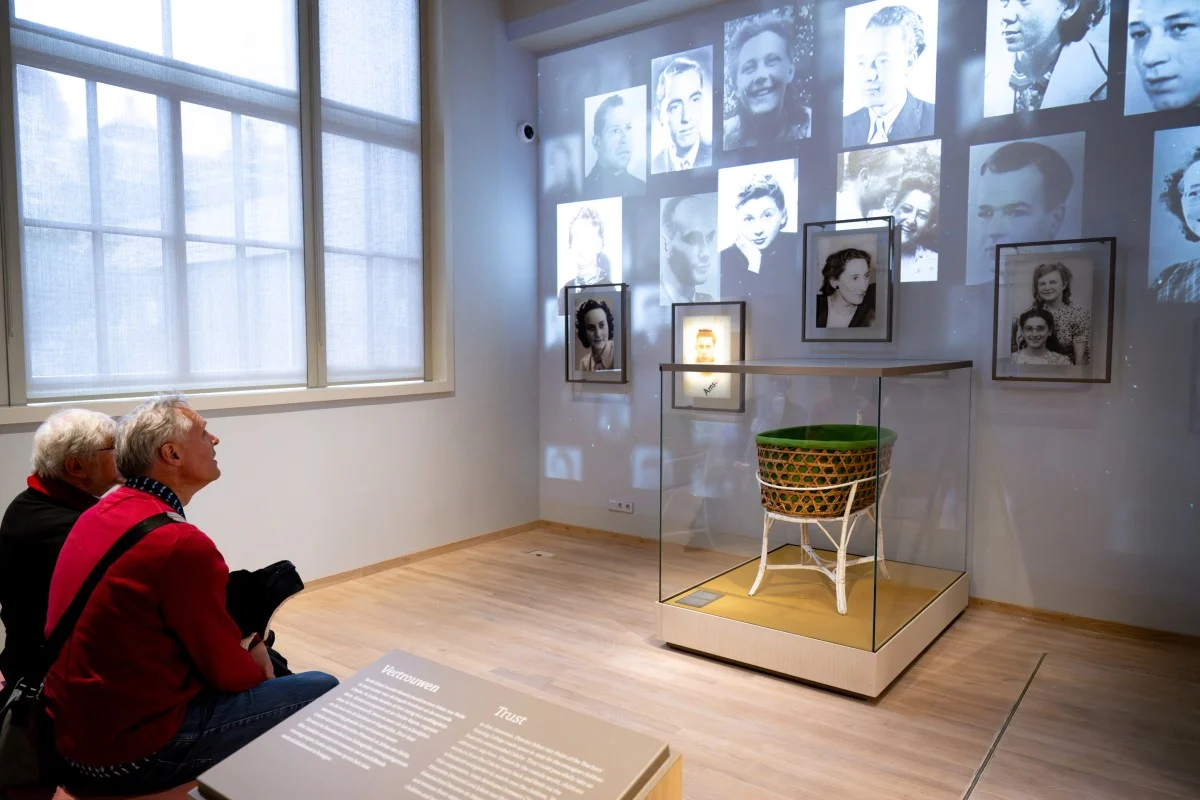A new exhibition in Amsterdam features personal items such as a backpack, a boot print on an artwork, and a 17th-century painting, all connected to the 1940-45 Nazi occupation of the Netherlands. Three of Amsterdam’s museums have collaborated to open this exhibition on May 31, focusing on the personal impact of Nazi Germany’s takeover on the country’s Jewish population.
Visitors to the National Holocaust Museum and Jewish Museum can explore the stories of eight individuals or families whose lives were dramatically altered when their belongings were looted before they themselves had to flee or perished in German concentration camps. Thousands of pieces of art, religious artifacts, and other belongings were stolen during this period and returned to the Netherlands after the war, leading to a prolonged struggle for their rightful owners to reclaim them.
“These are eight personal stories,” said Mara Lagerweij, a conservator at the Rijksmuseum, which collaborated with the Holocaust and Jewish Museums. The exhibition aims to demonstrate the systematic looting of Jewish objects and its profound impact on people’s lives.
One compelling story is that of Max Heppner, the son of German Jewish refugees who left Germany shortly after Hitler rose to power in 1933. The Nazis eventually caught up with the Heppners in 1942, forcing them to hide in a chicken coop in the southern Netherlands. Heppner’s backpack, used during their time in hiding, is displayed alongside drawings he made while living in constant fear of Nazi arrest. Reflecting on his experiences, Heppner, now 90, remarked on the surreal nature of the time, noting that their possessions were confiscated by local Amsterdam policemen, not Nazi soldiers.
Another poignant exhibit is a graphic print by Dutch artist Samuel Jessurun de Mesquita, a tutor and friend of M.C. Escher. The print, titled Evil-speaking Little Women, was salvaged by Escher after De Mesquita’s house was looted, and the family was deported to Auschwitz. The artwork bears the imprint of a jackboot from the raid.
Additionally, the exhibition features Jewish religious artifacts and a painting by Dutch Golden Age artist Gerrit Berckheyde. The 1672 work, titled The Golden Bend, is part of Desi Goudstikker-von Halban’s lifelong struggle to reclaim looted Jewish art after the war.
Before the Nazi occupation, the Netherlands had a vibrant Jewish community of around 140,000 people, mostly in Amsterdam. By the end of the Holocaust, an estimated 75 percent, or 102,000 people, had been murdered. The Netherlands continues to grapple with its role in the persecution of Jewish people, opening a Holocaust memorial in 2021 and a Holocaust Museum earlier this year, amid rising antisemitism.
The exhibition underscores the involvement of Dutch citizens, police, and railway companies in collaborating with the German occupation to round up Jewish people and send them to concentration camps.
READ MORE:
